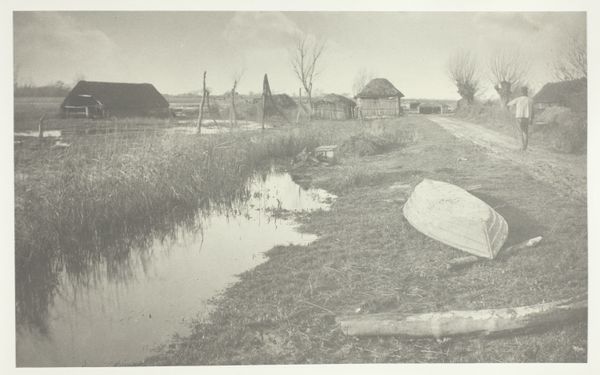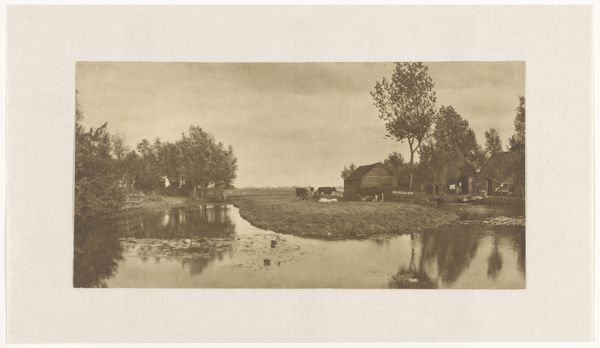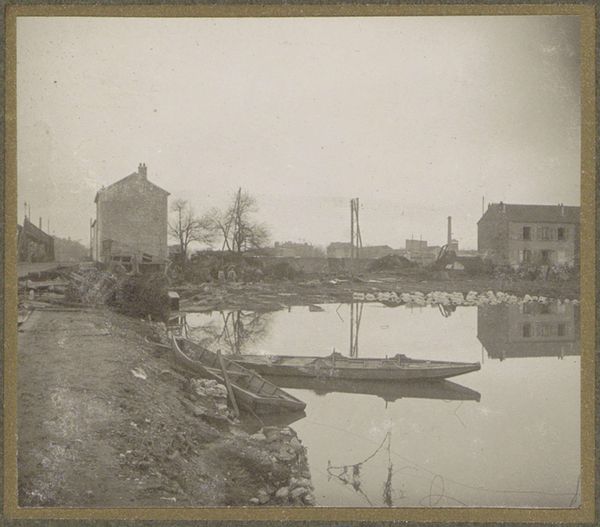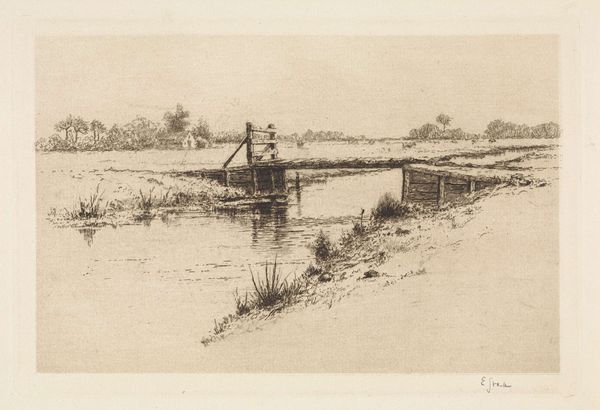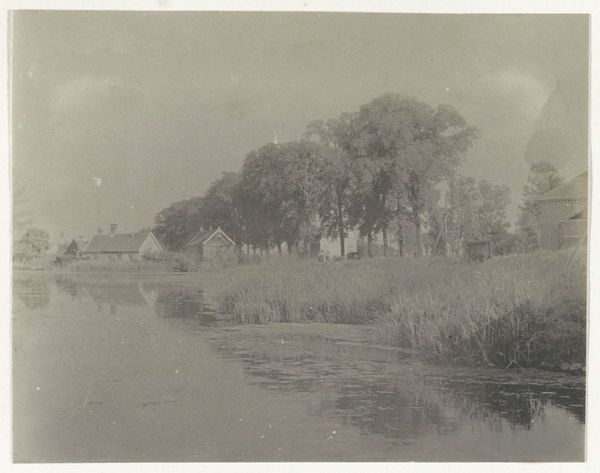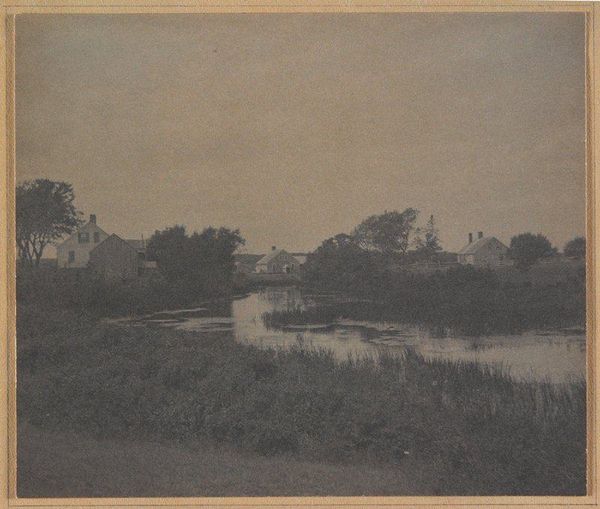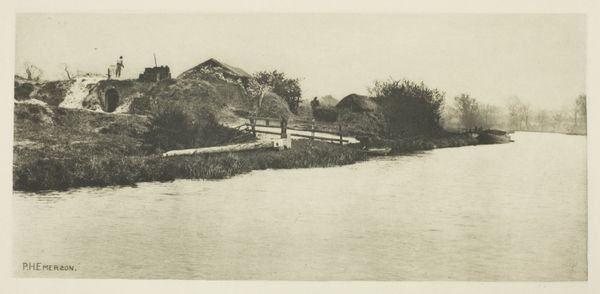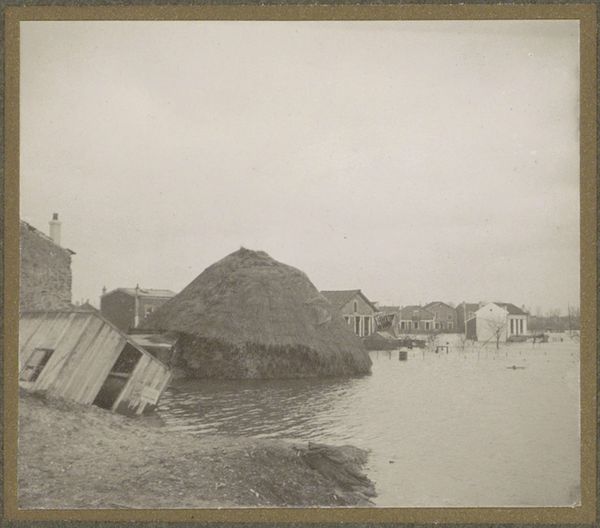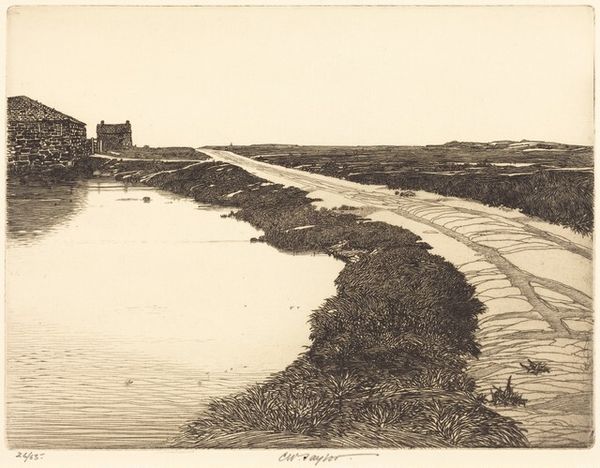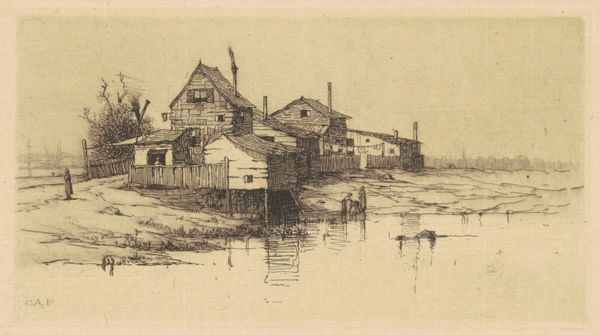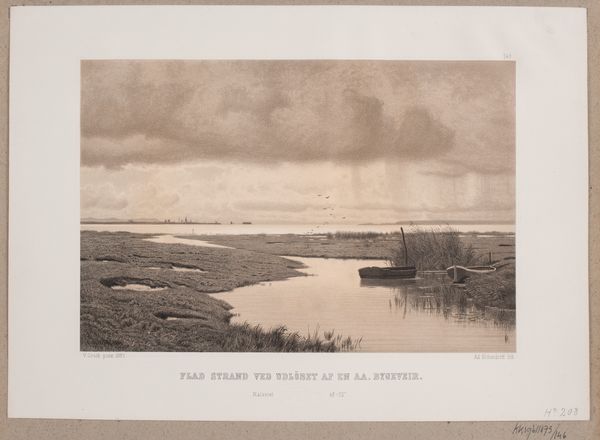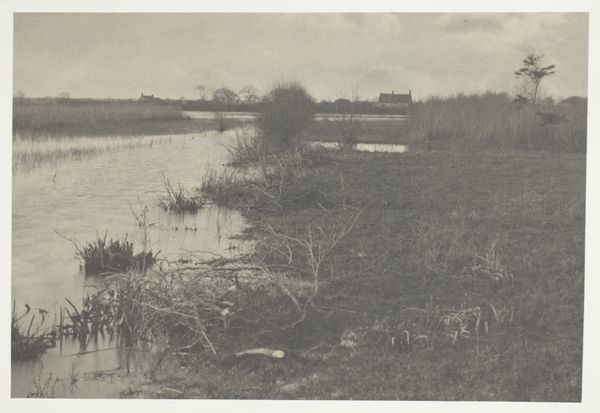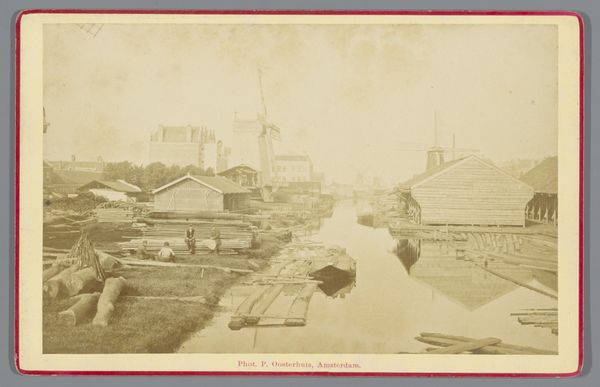
photogravure, photography, gelatin-silver-print
#
photogravure
#
natural tone
#
pictorialism
#
landscape
#
repetition of white
#
natural light
#
photography
#
low-saturation
#
natural colour palette
#
low atmospheric-weather contrast
#
england
#
naturalistic tone
#
gelatin-silver-print
#
moderate light
#
naturalism
#
remaining negative space
#
soft colour palette
Dimensions: 4 9/16 x 7 7/16 in. (11.59 x 18.89 cm) (image)11 1/16 x 14 13/16 in. (28.1 x 37.62 cm) (mount)
Copyright: Public Domain
Curator: Here we have J. B. B. Wellington's "Eventide," a photogravure from 1890, currently residing here at the Minneapolis Institute of Art. It captures an English estuarine scene. Editor: It's quiet, somber even. The muted tones and soft focus create a wistful atmosphere. There's a sense of decay in the foreground with the dilapidated boat wreckage. Curator: Wellington’s pictorialist style is evident in the way he manipulates the light and shadow, creating depth and texture. Observe how the composition is structured around the winding waterway, leading the eye towards the distant structures. It's a skillful application of naturalism. Editor: Naturalism, yes, but naturalism that perhaps romanticizes rural labour. It certainly obscures the harsh realities of working-class life, reducing human figures to silhouettes on the horizon, focusing instead on horses, water and open land. What was daily work for the poor is turned into a visually pleasing scene for the emerging middle class who can buy such photographs for their homes. Curator: I can see how you read it that way. I suppose the composition isolates these figures to simple shapes but consider the way that Wellington makes subtle choices—like the repetition of white, as can be observed on the horses and the clouds, creates an effect that pulls the landscape into one picture. It evokes harmony. Editor: Harmony purchased at the expense of those not centered in it, I suspect. Did Wellington give thought to these estuarine folk or did he choose an ideal England that reflected little of reality? These gelatin prints could function as potent propaganda to justify current systems of exploitation. I don’t see any sense of interrogation of social systems, and this seems typical of the upper-class English sensibility. Curator: Even if his intent was purely aesthetic, which I suspect it was, it doesn't negate the visual interest. I think his subtle, masterful manipulation of tone contributes to the impact of this image. Editor: And I suggest we can’t afford to divorce images like these from the social contexts from which they are born. We mustn’t divorce images from ideology. Curator: An important consideration, indeed. Editor: Always is, always will be.
Comments
No comments
Be the first to comment and join the conversation on the ultimate creative platform.
